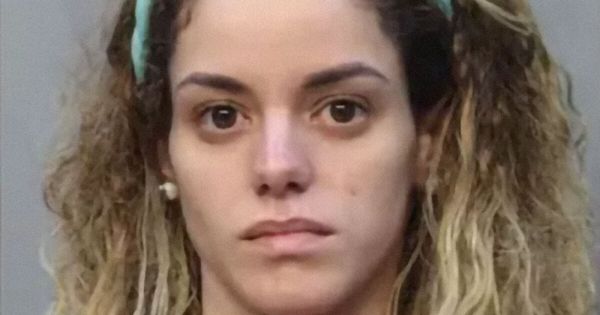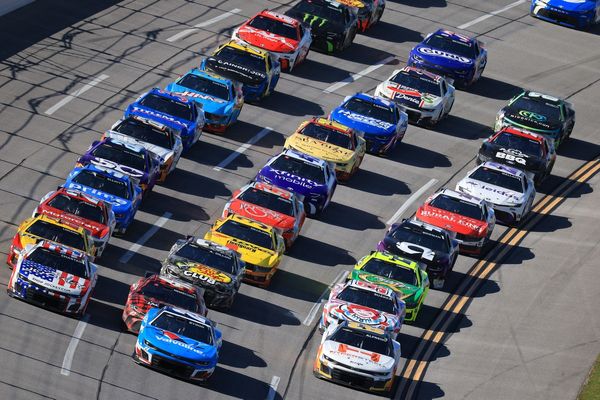Pomp and circumstance will be part of the proceedings when the Steelers and Dolphins face off Sunday night, with the hosts honoring their 1972 Super Bowl team, the same one that pushed through Pittsburgh in the AFC championship en route to the only unbeaten season in NFL history.
The celebration surely won't mention it, but one of the subplots of that memorable game was what happened to the Steelers' starting quarterback. Terry Bradshaw had his "bell rung," as one Post-Gazette writer put it in the next day's paper. Steelers coach Chuck Noll told reporters Bradshaw had a pinched nerve in his neck, and "had trouble remembering things." Bradshaw himself said afterward he was "knocked a little crazy," referencing a hit to his shoulder and neck, and that he "had trouble thinking."
Fifty years ago, no one thought much of Bradshaw going back into that game. Fifty years later, all eyes will be on a pair of starting quarterbacks who each left their last game with a diagnosed concussion.
"I'm just really excited that I can prepare and play this Sunday," Dolphins quarterback Tua Tagovailoa said this week. "I think everyone's excited to go out there and compete against a really good Steelers team."
Tagovailoa will be back in prime time 24 days after a harrowing scene in a Thursday night loss in Cincinnati. It was Sept. 29 when Tagovailoa's concussion sent seemingly the entire football world into a state of horror. Bengals defensive lineman Josh Tupou, a mountain of a man listed at 6-foot-3, 340 pounds, tossed Tagovailoa — 6-1, 217 — to the turf for a sack. Tagovailoa's helmet whipped off the ground and more than 10 million viewers watched the aftermath.
The most vivid memory for many will be Tagovailoa's fingers twisting as he lay motionless on his back, being attended to by Miami's medical team.
"I think, in the sports community, it certainly renews interest," Dr. Alex Yu, a neurosurgeon with Allegheny Health Network, said of the visceral reaction many had to the scene. "It kind of refreshes the topic for everyone, for sure."
It was one of the most frightening immediate reactions to a head injury in an NFL game since 2019, when another quarterback — the Steelers' Mason Rudolph — took a helmet-to-helmet hit from Ravens safety Earl Thomas at Acrisure Stadium.
"It's very scary," Rudolph said Thursday morning in the Steelers locker room. "I remember when it happened to me. ... It's just a natural reaction, but it doesn't look good. It looks very scary. I remember I did the same thing with my hand."
The "fencing response" to brain injuries became a highly googled term that night, with many avid football watchers thinking back to Rudolph's concussion, when he had the face mask removed from his helmet and was helped off the field by team doctors rather than riding off on a cart. The stretcher eventually came for Tagovailoa, who was transported to a local hospital, and his recent injury history threw the NFL into a renewed concussion discourse.
Four days prior to playing in Cincinnati, Tagovailoa left a game against the Bills after another hit in which he fell backward and his helmet banged off the field with two minutes left in the first half. He stumbled and struggled to keep his balance on the way back to the huddle, so the Dolphins took him out with what the team initially called a head injury. But when the third quarter started, Tagovailoa was back, having cleared the NFL's concussion protocol, according to the Dolphins. The NFL Players' Association announced it would investigate that process,
When Tagovailoa was knocked unconscious the very next game, the Dolphins and the league found themselves under even more of a microscope. Tagovailoa's team claimed that what knocked him out of the game in Week 3 was determined to be a back issue. But the unaffiliated neurotrauma consultant — UNCs, for short — who was involved in his clearance to return against the Bills was fired by the NFL and the league subsequently revised its concussion protocols in agreement with the NFLPA.
"While the investigation determined that the team medical staff and unaffiliated medical professionals followed the steps of the Protocol as written, the NFL and NFLPA agree that the outcome in this case is not what was intended when the Protocols were drafted," read a joint statement issued Oct. 8.
The upshot was the addition of the term "ataxia" to the official concussion lexicon. It's defined as "abnormality of balance/stability, motor coordination or dysfunctional speech caused by a neurological issue," and it's now considered a "no-go symptom" in an NFL game. So, if ataxia is observed in a player — such as Tagovailoa dropping to his knees against Buffalo — he's done for the day.
This past Sunday in Pittsburgh, Steelers quarterback Kenny Pickett absorbed a hit from Buccaneers linebacker Devin White midway through the third quarter. Similar to the Tagovailoa play against the Bills, Pickett's helmet bounced off the grass and he was slow to get up.
It didn't take long before the Steelers ruled out Pickett for the rest of the game with a concussion. But by Tuesday, coach Mike Tomlin was at his weekly news conference explaining that Pickett would likely be a full participant in Wednesday's practice. Indeed, he practiced with no limitations Wednesday, and again Thursday. That made Pickett the first player this season to practice fully three days after sustaining a concussion, and only six players have been cleared to play in the next game.
"After going through it, yeah, you're sympathetic to other players that go through it," said Rudolph, the last Steelers quarterback to be diagnosed with a concussion before Pickett. "We've got great specialists here. The league employs good specialists."
When the NFL and its players union adopted its current concussion protocol in 2013, it did so to ensure that "competitive decisions never usurp quality care." In other words, a player can't rush himself back, or a coach can't overrule a medical expert because it's what's best for the team.
"I think what's always going to be challenging is the treatment and diagnosis of concussions," Yu said. "It's kind of an evolving process in the sense of, as we learn more — in terms of diagnosis and treatment — it'll kind of evolve over time."
Rudolph remembers he was frustrated going through all the necessary steps following his high-profile concussion. Cognitive evaluations, baseline tests, written exam, physical conditioning — Rudolph just knew he wanted to play again the next week. And he recalls people around him giving the old "yeah, yeah, you'll be OK" just to calm him down.
"That was totally out of the realm of possibilities," Rudolph said.
While the protocol is written to be uniform, each brain injury is different. Rudolph's and Pickett's took place three years and 10 days apart at the same stadium, both forcing the starting quarterback to an early exit, but the parallels may end there.
Tagovailoa acknowledged that he's learned a lot about concussions lately. He called it a "pretty stressful" process, and when it comes to that night in Cincinnati, it all gets fuzzy in between the sack and being loaded into an ambulance. He even came to Pittsburgh to be checked by neuropsychologist Dr. Michael Collins, who is executive director of UPMC's sports medicine concussion program.
Questioned Wednesday by Miami media if the thought of long-term health effects weighs on him, his answer was measured.
"I would say no," Tagovailoa offered, then paused. "Yeah, no. I would say those kinds of things weigh more on my parents than they do for me, just with me being their son. But I just want to go out there and do good for our team, do right for this organization, do right for the guys inside the building that I see every day, that work very hard."
Tagovailoa said he's been told by experts in the field that, being a quarterback, "there's not necessarily as much long-term risk." Playing his position, he believes, he's less likely to develop chronic traumatic encephalopathy — better known as CTE — than a lineman who takes 60 snaps a game and repeatedly takes blows to the head.
A lineman such as Steelers right guard James Daniels, who fancies himself as a bit of a trend-setter within his unit. He still diligently wears his "Guardian cap" each day at practice, long after the NFL mandated them during training camp. Daniels finds comfort in the protective cushion affixed to the top of his helmet, and has noticed some teammates beginning to join him.
"Concussions have always been part of the game," Daniels said Wednesday. "Yeah, the helmets and stuff are becoming better, but also the athletes are becoming bigger and stronger. The collisions are becoming harder collisions. I do believe the NFL said last year was the least amount of concussions that had been reported, but those are reported concussions."
Daniels is correct. The NFL's official numbers on concussions tracked an average of 247 per season from 2015-2019. There were 187 documented last year (and 174 in 2020, but no preseason games were played).
But Daniels also raises the point that protecting players from themselves can be impossible to police. And, selfishly, he would love to see the technology that produced the funky Guardian caps players wore for preseason practices be implemented into helmets for the real thing, too.
"There are times during games where people aren't coming out," said Daniels, a first-year Steeler who spent his first four seasons with the Bears. "They have concussions, but they aren't coming out. I think this is a good start by the NFL with [the revised] concussion protocol, and hopefully they can integrate the Guardian caps into the games later."
Steelers players still wear those protective covers on Wednesdays, when practices tend to be a bit more physical. The team first instituted them back at minicamp in June, before the NFL required them.
"When the medical experts' opinions regarding its effectiveness changed, then so did my attitude," coach Mike Tomlin said. "They talk definitively now about the reduction of concussion risks for those that wear them, and when both parties are wearing them, it doubles the reduction risk. So, when we get definitive information by medical experts — I didn't go to med school — I follow their lead."
And he did the same this week with Pickett, as rookie Dolphins coach Mike McDaniel has done with Tagovailoa. Quarterback is different from any other position in the sport, but brain injuries don't discriminate. Pickett will be throwing to second-year tight end Pat Freiermuth, back for the first time since his concussion two Sundays ago at Buffalo — his third since November of last season.
Players are exempt from media obligations while in the concussion protocol, so we haven't heard anything recently from Freiermuth or cornerback Levi Wallace, who also missed the last game with a concussion. But the face of the topic likely speaks for many of his NFL brothers when asked the most difficult aspect of it all.
"Just watching my team go out to battle and I can't help them," Tagovailoa said. "It sucks. As a competitor, I want to be out there with the guys. I want to be able to go out there and help these guys win games. That's a terrible feeling that I could only watch from the sideline."
Rudolph will be watching from the sideline, too, after praying for Tagovailoa. He's heard good things about a full recovery, and speaks highly of the protocols "in place to keep us safe."
"Every player wants to play and get back on the field as soon as possible, but I think they're taking much better care of us now than they maybe they used to 10 years ago," Rudolph said. "I think we're going to appreciate being able to know our grandsons' names when we're 60."







